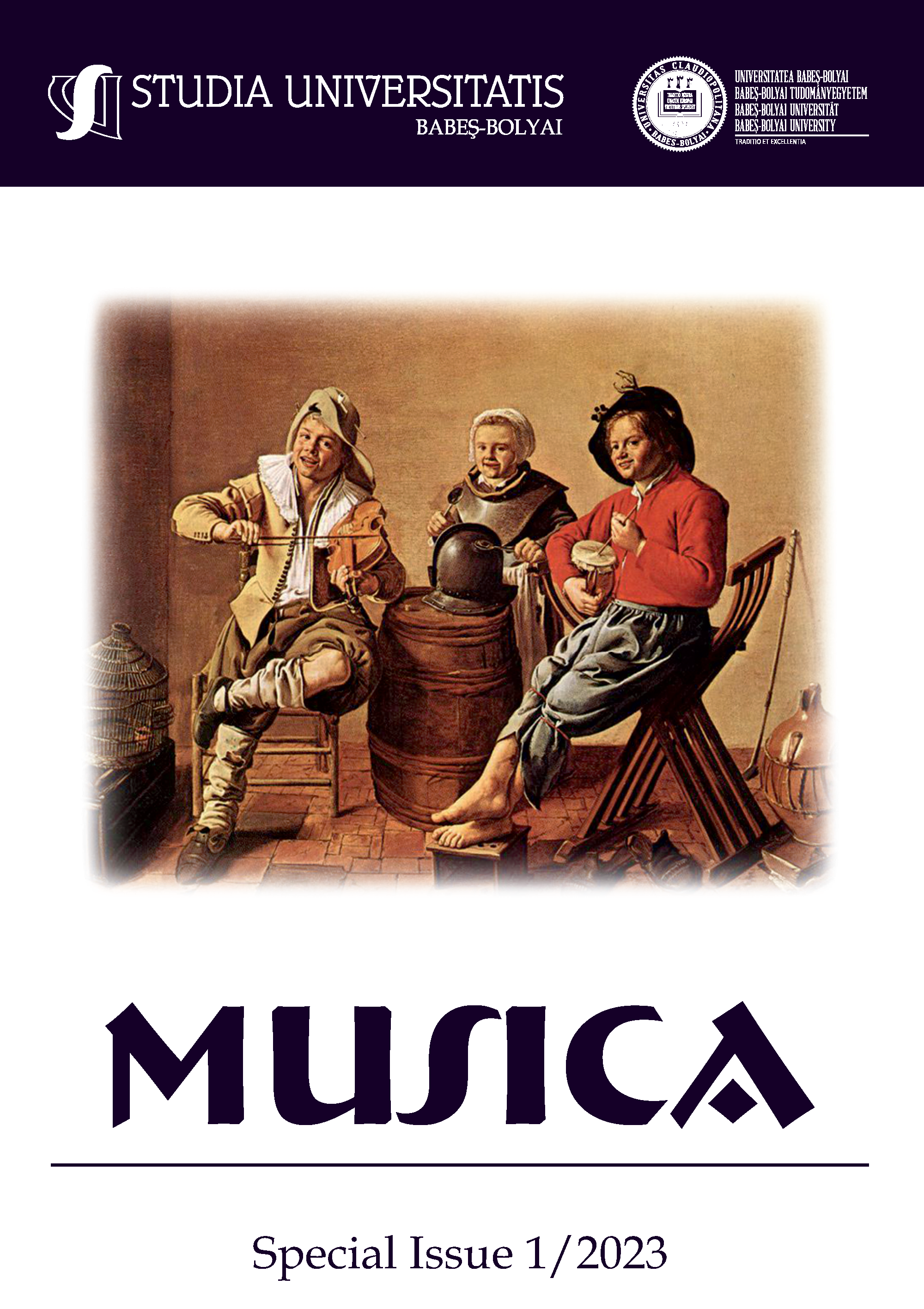THE TYRANNOUS FATHER IN OPERA SERIA
DOI:
https://doi.org/10.24193/subbmusica.2023.spiss1.06Keywords:
opera seria, Metastasio, absolutism, patriarchy, operatic dramaturgyAbstract
The article examines the role and function of the father figure in the libretti of Pietro Metastasio, focusing on the representations of the tyrannous rather than the benevolent father. The bulk of his oeuvre written for the Viennese court, Metastasio’s libretti took an active role in propagating the reigning and intertwining social–political systems of absolutist monarchy and patriarchy. The tyrannous father figure served to heighten the usual tension of the contradictory duties of public and private lives, highlighting the dilemma of how far the paterfamilias should be obeyed and his mistreatment towards his child be suffered, analyzed here through the example of Artabano in Artaserse, also pointing out the differing relationship dynamic and dramatic treatment of father–son and father–daughter relationships. Through Astiage in Ciro riconosciuto, the article examines the role of the tyrant, the political "bad father", and how his figure ultimately serves to reinforce the absolutist system and the claim of the divine right of kings.
References
Burns, J. H. “The Idea of Absolutism”. In Absolutism in Seventeenth Century Europe, edited by John Miller, Macmillan Press, 1990. pp. 21–42.
Cavallo, Sandra. “Fatherhood and the non-propertied classes in Renaissance and early modern Italian towns”. In The History of the Family, Vol. 17, Nr. 3, 2012, pp. 309–325.
Cuttica, Cesare. “Tyrannicide and Political Authority in the Long Sixteenth Century”. In Routledge Companion to Sixteenth-Century Philosophy, edited by Henrik Lagerlund and Benjamin Hill, Routledge, 2017, pp. 265–292.
Feldman, Martha. Opera and Sovereignty. Transforming Myths in Eighteenth-Century Italy. University of Chicago Press, 2007.
Korneeva, Tatiana. “The Politics of Spectatorship”. In The Dramaturgy of the Spectator: Italian Theatre and the Public Sphere, 1600–1800, University of Toronto Press, 2019, pp. 69–90.
Menchelli-Buttini, Francesca. “Literary Motifs in Metastasio's and Jommelli's Ciro riconosciuto”. Music as Social and Cultural Practice: Essays in Honour of Reinhard Strohm, edited by Melania Bucciarelli and Berta Joncus. Boydell & Brewer, 2007. pp 250–274.
Metastasio, Pietro. Artaserse. Zempel and de Mey, Rome, 1730. Digital edition accessed at: https://www.progettometastasio.it/public/testo/testo/codice/ARTASERS%7cP1%7c000.
Ciro riconosciuto. Van Ghelen, Vienna, 1736, http://www.progettometastasio.it/testi/CIRO%7CP (date of access: 2023.02.05.)
La clemenza di Tito. Van Ghelen, Vienna, 1734. Digital edition accessed at: http://www.progettometastasio.it/testi/CLEMENZA%7CP (date of access: 2023.01.10).
Over, Berthold. “Virtù Eroica: Heroic Music, Social Norms, and Musical Reflections in Seventeenth- and Eighteenth-Century Italy.” The Heroic in Music, edited by Beate Kutschke and Katherine Butler, Boydell & Brewer, 2022, pp. 50–68.
Paranque, Estelle. “Royal representations through the father and warrior figures in early modern Europe”. In The Routledge History of Monarchy, edited by Elena Woodacre et al., Routledge, 2019, pp. 314–329.
Pomata, Gianna. “Family and Gender”. In Early Modern Italy 1550–1796, edited by John A. Marino, Oxford University Press, 2002, pp. 69–86.
Strohm, Reinhard. Dramma per Musica. Italian Opera Seria of the Eighteenth Century. Yale University Press, 1997.
Torre, Robert. “Operatic Twins and Musical Rivals: Two Settings of Artaserse (1730)”. In Discourses in Music Vol. 6, 2006, accessible at: http://library.music.utoronto.ca/discourses-in-music/v6n1a1.html. (date of access: 2023.02.15).
Downloads
Published
How to Cite
Issue
Section
License
Copyright (c) 2023 Studia Universitatis Babeș-Bolyai Musica

This work is licensed under a Creative Commons Attribution-NonCommercial-NoDerivatives 4.0 International License.






